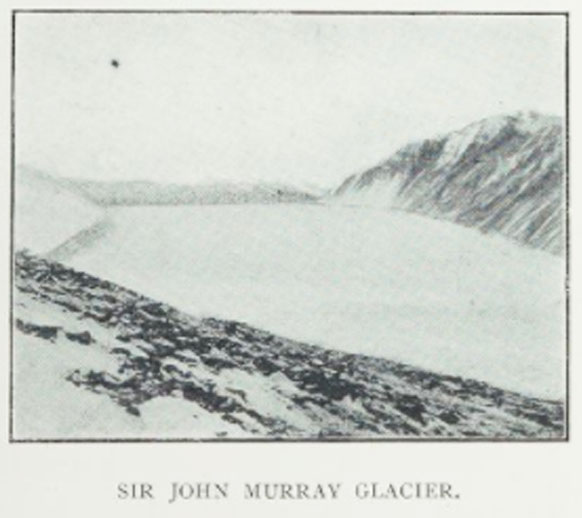Murray Glacier on:
[Wikipedia]
[Google]
[Amazon]

 Murray Glacier () is a
Murray Glacier () is a

 Murray Glacier () is a
Murray Glacier () is a valley
A valley is an elongated low area often running between Hill, hills or Mountain, mountains, which will typically contain a river or stream running from one end to the other. Most valleys are formed by erosion of the land surface by rivers ...
glacier
A glacier (; ) is a persistent body of dense ice that is constantly moving under its own weight. A glacier forms where the accumulation of snow exceeds its Ablation#Glaciology, ablation over many years, often Century, centuries. It acquires dis ...
, long, draining seaward along the east side of Geikie Ridge in the Admiralty Mountains
The Admiralty Mountains (alternatively Admiralty Range) is a large group of high mountains and individually named ranges and ridges in northeastern Victoria Land, Antarctica. This mountain group is bounded by the Ross Sea, the Southern Ocean, and ...
. Its terminus coalesces with that of Dugdale Glacier where both glaciers discharge into Robertson Bay
Robertson Bay is a large, roughly triangular bay that indents the north coast of Victoria Land between Cape Barrow and Cape Adare. Discovered in 1841 by Captain James Clark Ross, Royal Navy, who named it for Dr. John Robertson, Surgeon on HMS ' ...
along the north coast of Victoria Land
Victoria Land is a region in eastern Antarctica which fronts the western side of the Ross Sea and the Ross Ice Shelf, extending southward from about 70°30'S to 78°00'S, and westward from the Ross Sea to the edge of the Antarctic Plateau. It ...
. First charted by the British Antarctic Expedition 1898-1900, under Carsten Borchgrevink
Carsten Egeberg Borchgrevink (1 December 186421 April 1934) was an Anglo-Norwegian polar explorer and a pioneer of Antarctic travel. He inspired Sir Robert Falcon Scott, Sir Ernest Shackleton, Roald Amundsen, and others associated with the Hero ...
, who named this feature for Sir John Murray of the Challenger Expedition
The ''Challenger'' expedition of 1872–1876 was a scientific program that made many discoveries to lay the foundation of oceanography. The expedition was named after the naval vessel that undertook the trip, .
The expedition, initiated by Wil ...
, 1872–76.
References
Glaciers of Pennell Coast {{PennellCoast-glacier-stub